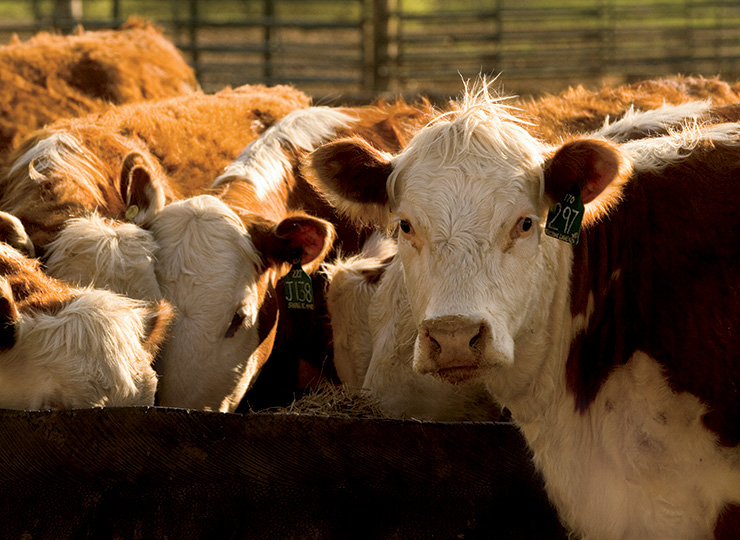Home > Illinois > Illinois Crops & Livestock > Illinois Beef Producers Bounce Back After Drought
Illinois Beef Producers Bounce Back After Drought

For Monte Lowderman of Lowderman Cattle Company in Macomb, the importance of family keeps the business alive and running. “If it weren’t for our cattle business, we would probably be spread across the country,” says Lowderman, one of three brothers that runs the company with their parents. The tragic loss of a younger brother brought the family closer together, which led to them significantly growing their business.
The operation raises Hereford cattle and has been praised as Breeder of the Year for the past two years. The Illinois Beef Association recently named it the Seedstock Producer of the Year. The family is also very active in the auction business. “Our love is definitely in the cattle industry,” Lowderman says.
Although the family faced challenges during the drought of 2012, Brent Lowderman, the brother in charge of the hay and pasture side of the company, says they are recovering nicely.

The company grows their own forage, but by June and mid-July of 2012, their source was cut in half from the previous year. They sourced lots of hay from out of state, and Brent visited neighboring farms to buy cornfields for feed. They did have to use more fertilizer than usual for this year’s hay crop, to help boost nutritional value.
While failing crops stole the headlines in 2012, farmers raising cattle felt just as much pain.
The historic Midwestern drought dried cattle pastures and diminished hay supplies while escalating prices of feedstuffs, such as corn and soybean meal.
“The beef industry wasn’t only impacted by the shortage of feed – a large part of it was a shortage of water,” says Lyle Flach with the Illinois Department of Agriculture (IDOA).
Flach regularly attends livestock auctions and provides reports for the department and USDA and IDOA Market News Service. During the 2012 drought, he witnessed a 20 to 30 percent increase in cattle values and an influx of cows at market. High feed costs and drought-induced hay shortages continued to liquidate herds into spring 2013. But at the same time, feed costs discouraged expansion and softened prices, he says.
Historically speaking, Illinois’ cattle inventory is low and rebuilding. The National Agricultural Statistics Service reports the inventory of cattle and calves over the last five years ranged from 150,000 to 215,000 head in Illinois. This echoes numbers last seen in the late 1920s. The story proves similar nationwide, where the inventory as of Jan. 1, 2013, was the lowest since 1950.

The industry expresses optimism looking forward with hopes that crop and forage production will return to normal. In fact, a resurfacing trend may add finished cattle to Illinois’ fame as a cow-calf state. Most cattle farmers own a cow herd and sell weaned calves to feedlots. That trend started more than 20 years ago, when a model encouraged shipping calves and feed resources out west to a drier climate, says Reid Blossom of the Illinois Beef Association. Today, he sees a shift. More cattlemen in Illinois and throughout the Midwest feed calves to market weight. They use locally grown grains and ethanol co-products to do it.
“Where they’re manufacturing ethanol fuel, we can get an extended use out of that corn product in the form of dry or wet distiller’s grains,” Blossom says.
Flach estimates one-third to one-half of cattle feed is in the form of ethanol co-products. Many cattlemen live within an hour of an ethanol plant, making this lower-cost feed readily available.
Illinois’ ingredients of widespread corn production, land suitable for pastures and educated cattlemen form the recipe for a successful beef industry, Blossom says. Farmers also have access to a variety of markets, including weekly livestock auctions, online cattle sales and proximity to several processing facilities in the state.
“Ithink a big challenge for us is to recoup a lot of those animals we’ve lost over the drought the last couple years,” Blossom says. “While Illinois is no doubt home to the best farmland in the country without irrigation, we also have a lot of land with a marginal soil type and not conducive to row crops. Cattle are a perfect fit for those acres.”



